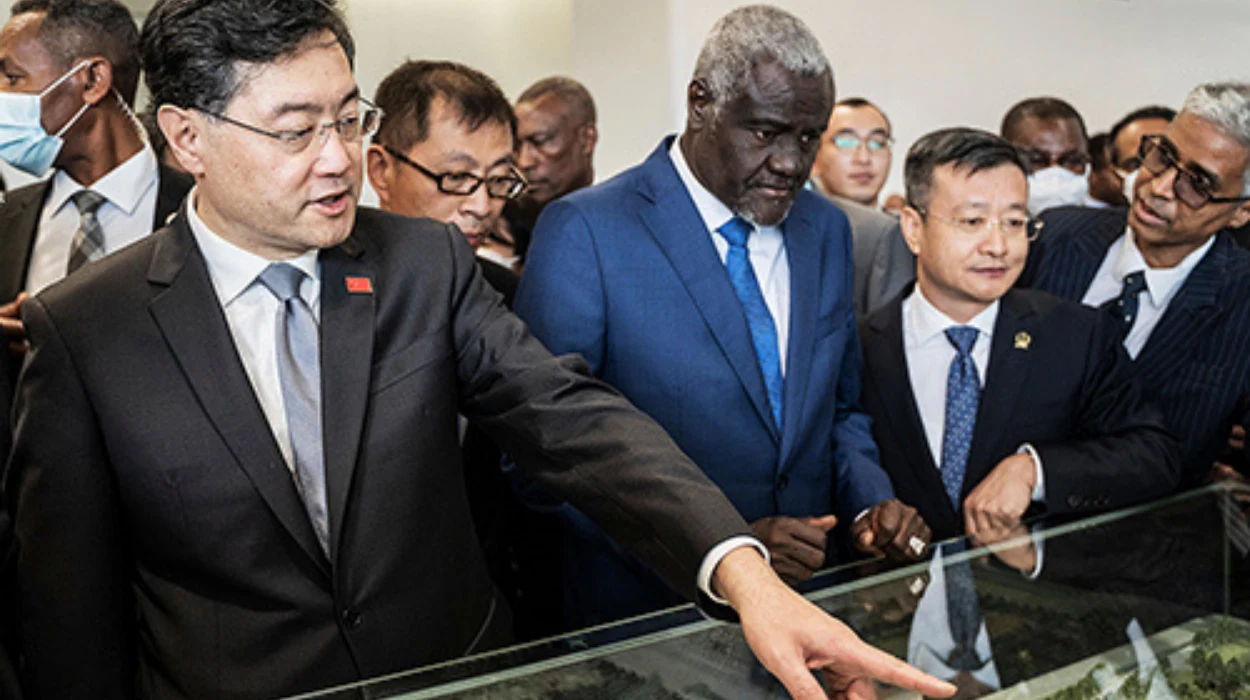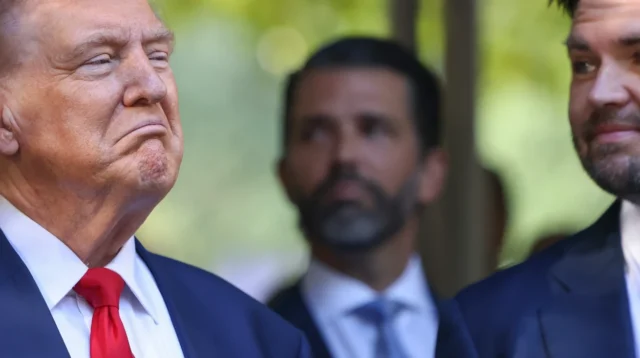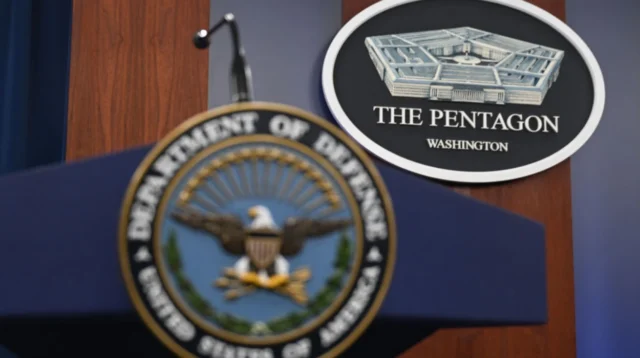The geopolitical significance of Africa is back in play as the United States and China continue their rivalry to gain influence in the world. The rivalry in this context is being waged in the form of economic infrastructure, digital connections, and acquisition of resources as opposed to ideological proxies represented during the Cold War period. The continent is the focus of global rebalancing in the 21st century with its strategic maritime position, richness of mineral deposits and a young population.
China is also the foremost trading partner in Africa with its importers and exporters reaching approximately 20 percent of the African imports and exports by the start of 2025. In Kenya in Standard Gauge Railway and Ghana in bauxite mining concessions, Beijing investment is in infrastructure, mining, and telecommunication. It has also funded close to 70 large scale development initiatives in the continent over the past five years.
On the contrary, the expiry of the African Growth and Opportunity Act (AGOA) in 2025 will be a significant loss in US-Africa economic academic activities. AGOA had facilitated the export of African products particularly textiles, agriculture and automotive parts to the US tariff free. The impending end of it puts thousands of jobs in countries such as Ethiopia, Kenya, and Lesotho at risk and at the same time frustrates the confidence of the sustainability of American economic promises.
Economic expansion strategies: contrasting approaches and consequences
China’s Africa strategy in Africa has been based on the Belt and Road Initiative (BRI), which can now enter the second phase based on the stronger focus on energy, logistics, and digital corridors. The concessional loans and long-term resource-backed financing that Beijing insists on are an attraction to the African governments that would want to develop rapidly without strict political requirements.
Dynamically, the Chinese investments in cobalt and copper mining in Democratic Republic of Congo and Zambia respectively, can be said to serve its green energy revolution interests. With the rise in production of electric cars in the world, the ability to control mineral chains puts China in a strategic position. Creation of the Bagamoyo Port, inland railways in Nigeria and Sudan are also indicators of the dominance of logistics that Beijing focuses on.
But these projects in many cases have strings attached. Even though officially China denies the charge of debt-trap diplomacy, some African nations including Angola and Zambia have agreed to new debt repayment conditions in response to growing pressure on the debt. There are still questions concerning local labor rights, environmental protection and transparency.
US geopolitical recalibration and missed opportunities
Facing China’s momentum, the United States has made attempts to reclaim lost ground. In 2025, the Biden administration renewed efforts to invest in strategic infrastructure projects, exemplified by the $600 million commitment to the Lobito Corridor in Angola. Designed as a logistical alternative to Chinese-backed railways, this project connects Zambia’s copper belt to Atlantic export terminals.
Yet these initiatives remain episodic rather than systemic. Internal political divides and competing foreign policy priorities hinder the development of a unified Africa strategy. Unlike China’s state-coordinated push, US interventions rely heavily on private sector initiatives, which often demand high returns and shy away from long-term development risks.
The termination of AGOA is particularly consequential. It not only affects exports but also weakens industrial development built on predictable access to American markets. African manufacturers reliant on US trade are forced to pivot often toward Chinese buyers or regional markets reducing American leverage and signaling inconsistency in engagement.
African sovereignties caught between competing influences
African governments often welcome foreign investment as essential to infrastructure and industrial expansion. However, they must balance these economic opportunities against the risk of compromising national sovereignty. Chinese loans tied to collateralized resources or infrastructure control create conditions where bargaining power diminishes over time.
Examples include Uganda’s controversy over airport collateralization and Ghana’s lithium-for-infrastructure agreements. These arrangements underscore the difficult trade-offs that come with foreign financing models. Fear is increased by the fact that the contracts are not totally transparent and that the parliament is not that thoroughly monitoring activities, which threatens that the strategic national assets can be placed under the indirect control of foreigners.
However, the competition between the US and China, despite the presence of alternatives, poses the danger of making Africa seem like it is not a collaboration but a competition ground. This dynamic, according to policy analysts, puts a scenario where there is external interest taking over the local priorities and hence compromises democracy and policy independence.
Calls for African agency and regional integration
The demand to have a third path within the African Union and regional economic communities is gaining strength whereby there is no overreliance on any of the two superpowers. African Continental Free Trade Area (AfCFTA) has been in operation since 2021 but has been gathering ground in 2025 and this initiative is critical in the endeavor. It promotes trade among African countries, standardization and regional value chain, which seeks to keep more value on the continent.
High ranking African leaders such as the Nigerian President and Kenya Foreign Minister have requested structural reforms to maximize local content, negotiate better contract terms and enhance transparency in international contracts. The Pan-African intellectuals propose the establishment of development finance institutions without any Chinese or western interference to reduce foreign susceptibility.
Rising youth movements and civil society groups further demand accountability from their governments in dealing with both Chinese and American actors. These local pressures represent a critical lever in asserting African interests beyond geopolitical maneuvering.
Strategic competition and sovereignty implications in 2025
The consequences of this global rivalry manifest not only in investment patterns but in Africa’s internal policymaking dynamics. Security partnerships, digital infrastructure, and defense cooperation are increasingly subject to influence from one bloc or the other. China’s digital initiatives, such as Safe City projects in Ethiopia and Angola, integrate surveillance technologies that raise ethical and sovereignty questions. Conversely, US-led cybersecurity partnerships attempt to restrict Chinese technology providers but come with intelligence-sharing conditions that African governments view cautiously.
Trade wars and currency instability linked to geopolitical tensions also ripple into African markets. As of mid-2025, global commodity price volatility partly influenced by US-China disputes over rare earth exports has destabilized African economies reliant on mineral and agricultural exports.
This person has spoken on the topic: Economist Steve Hanke, known for his work on global economic systems, recently emphasized the risks of Africa becoming overleveraged by competing foreign interests. He stated that:
“Africa’s economic destiny is at a crossroads between dependency and self-determination, where external powers’ scramble threatens to overshadow homegrown initiatives for prosperity.”
Hanke called for stronger African-led frameworks and transparent governance in all foreign partnerships.
While Trump burdens the US with tariffs, the world races to expand trade.
— Steve Hanke (@steve_hanke) October 6, 2025
China just granted tariff-free access to 53 African nations. Chinese exports to the EU and India surged over the past year.
SANCTIONS ALWAYS BACKFIRE. pic.twitter.com/nNEb9pnjkg
The increasing competition between China and the United States to control the African region demonstrates the instability of the global development patterns, which relies on the geopolitical affiliations. With investment flowing into ports, railways, and extractive industries, the key question facing African countries is not who constructs the infrastructure, but who sets the rules, terms and direction of such interactions. The actual issue that remains is, will Africa turn external competition into a driving force of internal change or will its sovereignty suffer more external blows because of the power politics in the 21st century?





